As you know, I had the good fortune to be part of this year’s China Bridge program, sponsored by US’s College Board, which included a nine day visit in China. This year the program invited over 170 educators from across the US to congregate in Beijing, and we were divided into six different delegations to travel to various provinces of China to learn about the Chinese culture and educational system. I was part of the Shandong (山東) Province group which included twenty-six educators from New York City, Baltimore, Washington, DC, New Jersey, Philadelphia, Maine, and me, the sole participant from Massachusetts.
Aside from visiting the usual Chinese tourist sites such the Tiananmen Square, the Forbidden City, and
the Great Wall, the highlight of the trip was definitely our school visits in Shandong. It was a great learning experience to interact with, and learn from, Chinese students and educators as well as the twenty-six US educators with whom I traveled and closely connected.
Shandong Province is located not that far south of Beijing, so we had the experience of riding the bullet train to get there and back.

The residents of Shandong like to let visitors know that they are the province of “One River, One Mountain, and One Saint”. The one river is
the Yellow River which flows through and ends in Shandong. Mt. Tai (泰山), a mountain that holds sacred meanings for the Chinese, is also located in the province. Lastly, the town of Qufu (曲阜), the birthplace of Confucius (who is regarded as a saint and worshipped by most Chinese), is located in Shandong as well.
 |
| At the foot of Mount Tai |
 |
Main Hall of the Confucius Temple
|
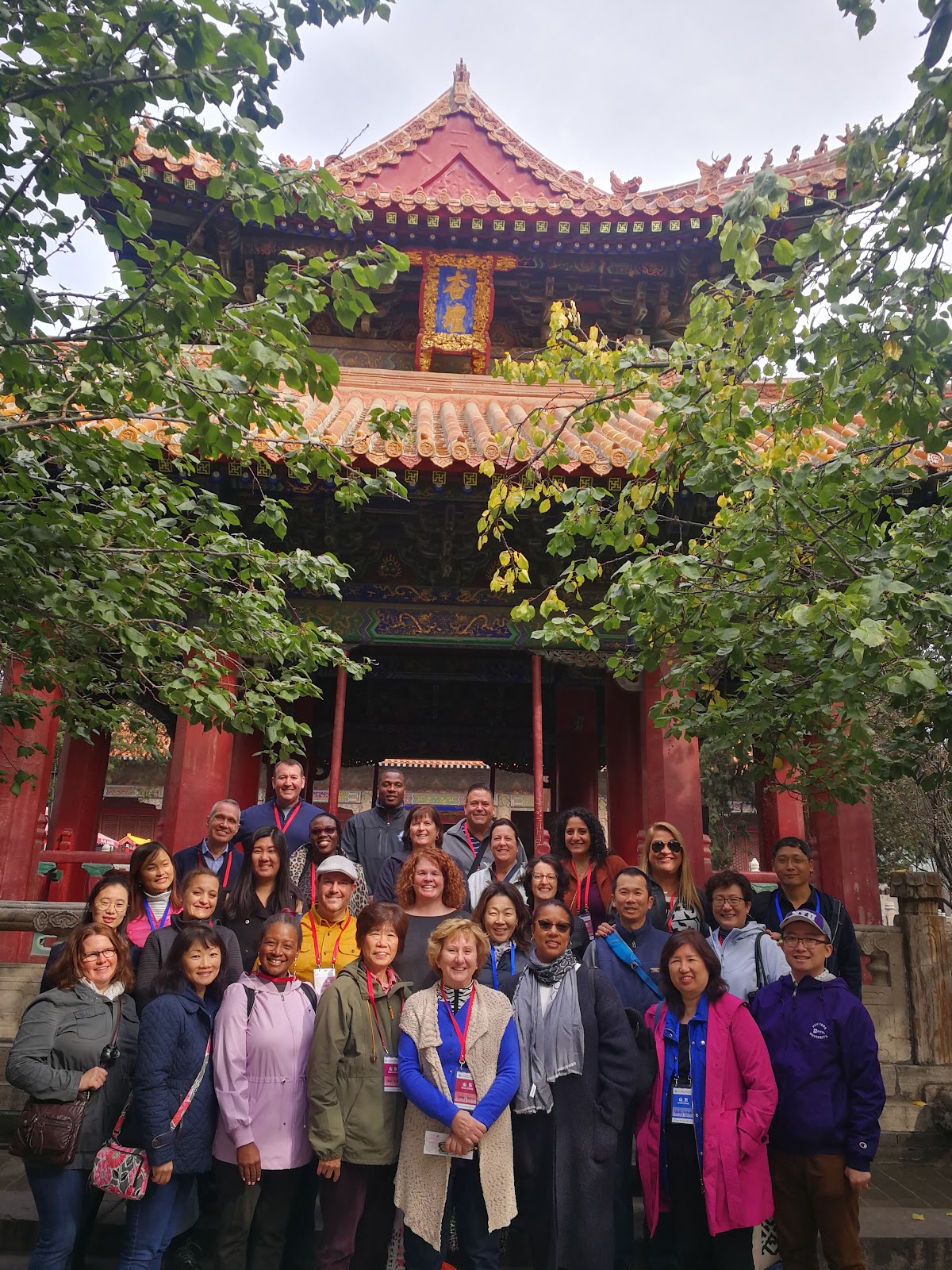 |
| Apricot Pavilion at the Confucius Temple. Site where Confucius taught many of his disciples. |
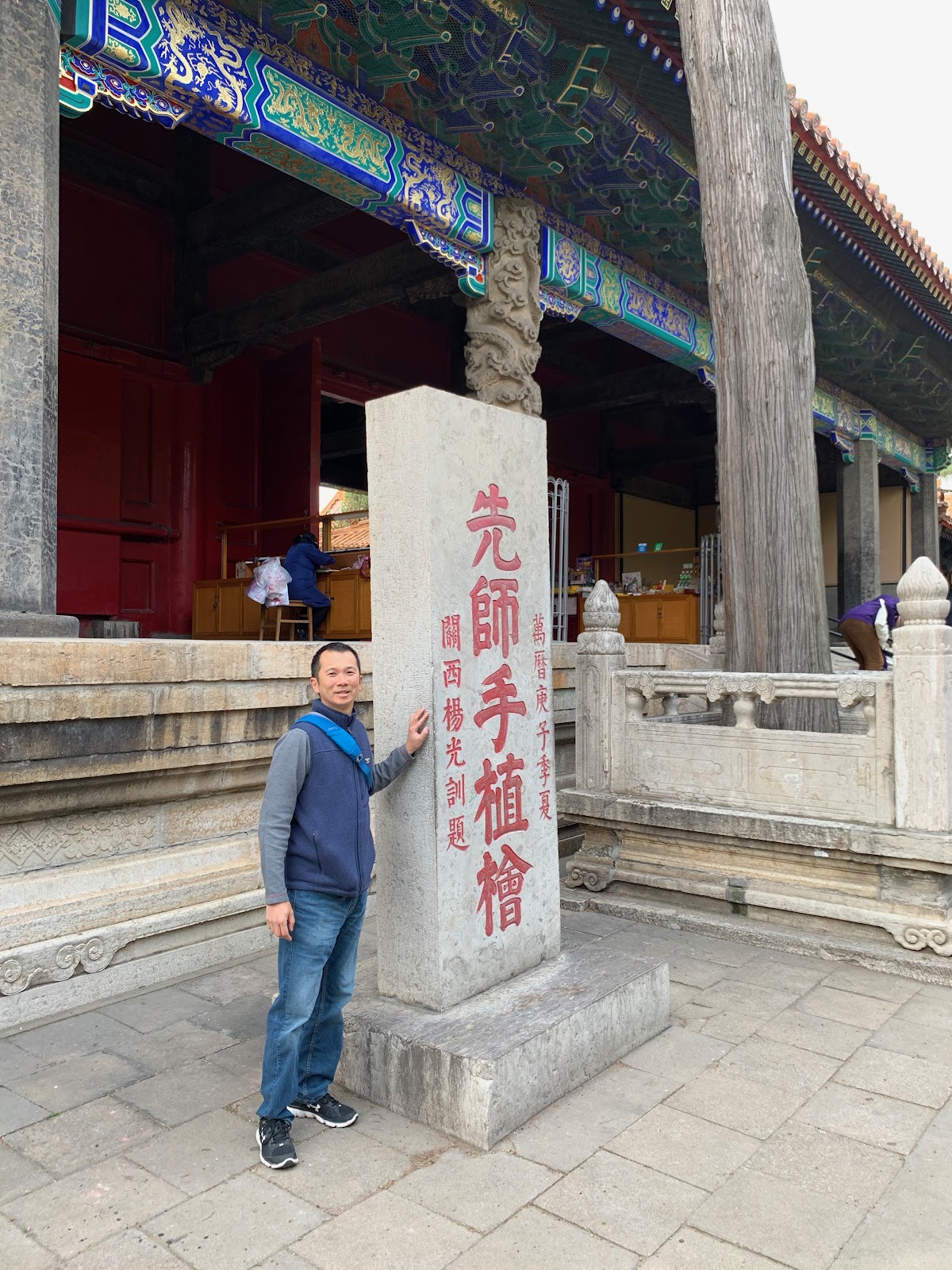 |
| Tree planted by Confucius himself |
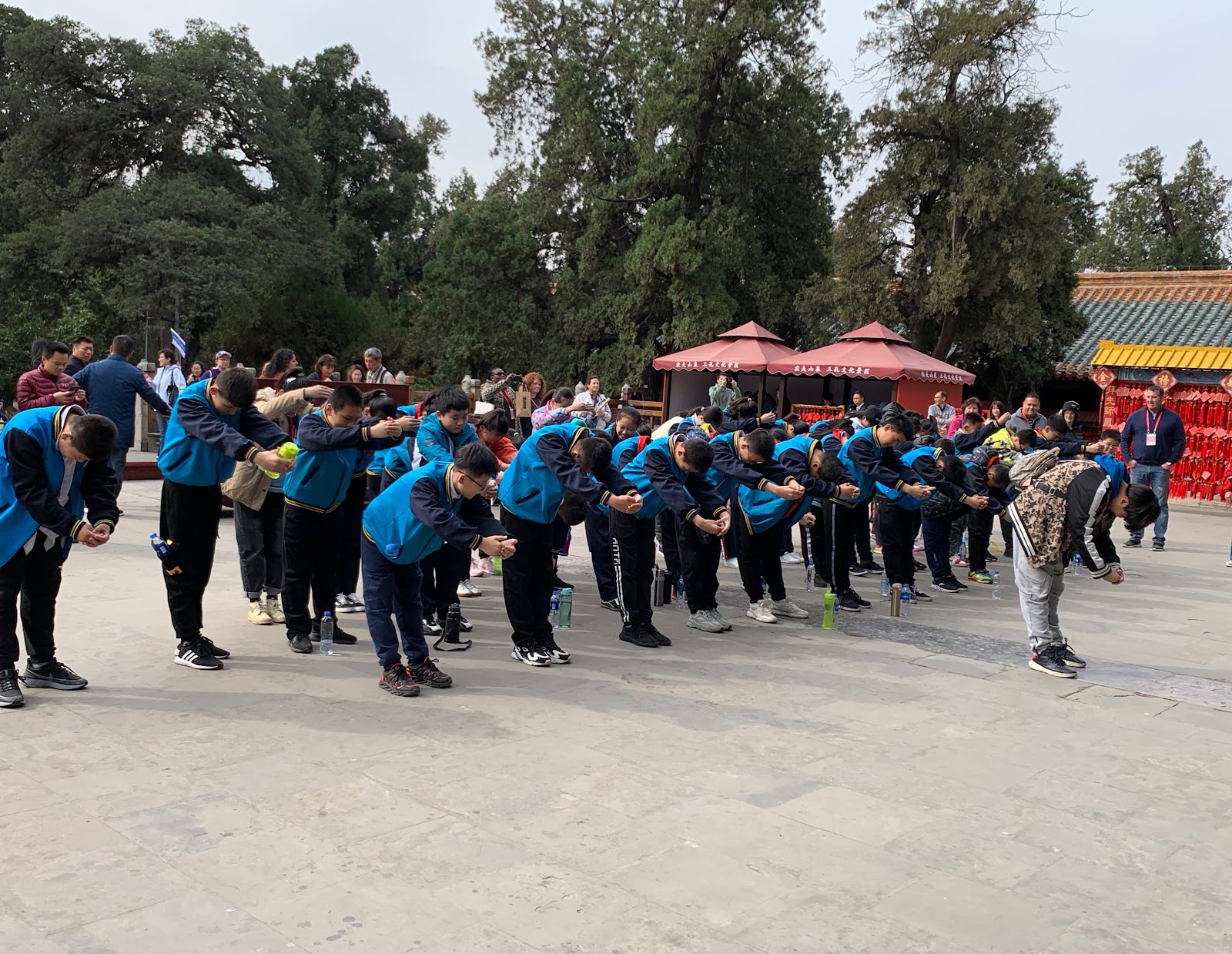 |
| Students paying respect to Confucius at the Confucius Temple |
It is apt for an American educator who is learning the Chinese education system to visit the hometown of Confucius since he is regarded as the first teacher of China, and his teaching which originated thousands of years ago still guides and permeates through the Chinese culture. Confucius’s teaching of 禮 (meaning propriety or etiquette) is very evident in Chinese schools. Structures of schools and classes are hierarchical. This is evident from how leaders of the schools and teachers are addressed by students and parents and where people sit during meetings. Teachers are treated as sources of wisdom and knowledge so each lesson begins and ends by the entire class of students standing up to greet and thank the teacher in unison. When teachers talk about teaching a lesson during everyday conversations, they do not use the word “teach”. Instead, teachers use the term 講課 (meaning to lecture) to describe what they do in the classrooms, and they use the term 聴課 (meaning to listen to a lecture) to describe what students do in the classrooms. There is a lot of cold calling during a lesson. When students are called, they stand up to answer the teacher’s questions. Chinese class sizes are well over forty-five students, and everyone is seated in rows. Unlike our classes, students do not move from classrooms to classrooms. They stay together as a 班`(a classroom of students). More often than not, students stay in the same classroom and sit in the same seat for every class in the school day and the teachers travel to the students.
 |
| 1st Grade Language Class |
 |
| 7th Grade Math Class |
This is even the case for “Exploratories” such as Art, Calligraphy, and Music classes. Teachers lecture, and students listen and model their teachers’ demonstrations. Students sit in rows.
 |
| Music Classroom of the Affiliated Middle School of Jining Institute in Jining, Shandong |
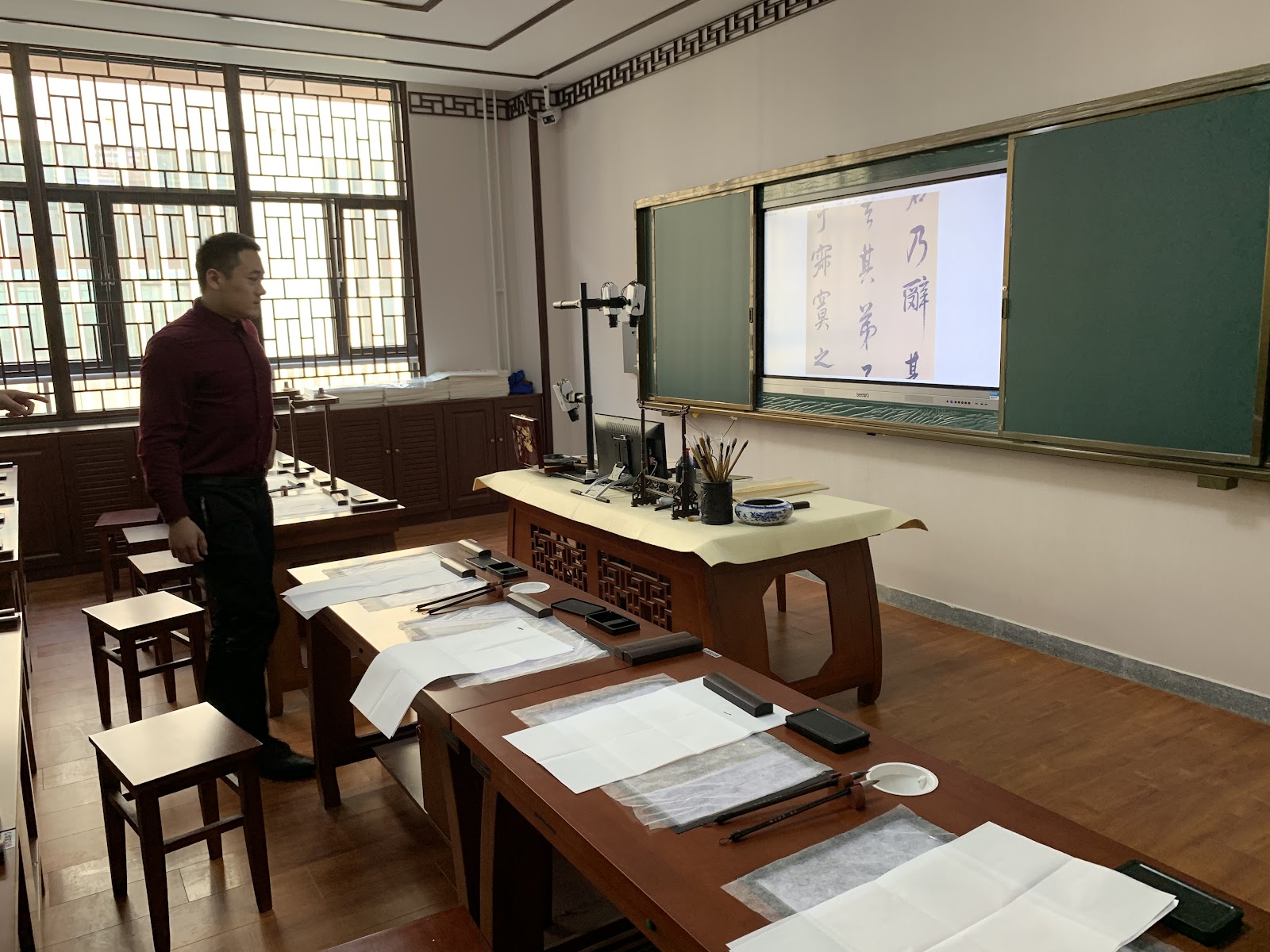 |
| Calligraphy Classroom of the Affiliated Middle School of the Jining Institute in Jining, Shandong |
The teaching of Confucius combined with the practical need to service such a large human population means schools are focused on teaching the collective as opposed to the individual. Recesses are primarily group exercises lead by school leaders and teachers, and PE classes are made up of drills even for students as young as kindergarteners. Attached
here is a video of a recess involving the entire student body of a secondary school in Jining, Shandong.
 |
| Juniors and Seniors of Taishan Middle School's Airlines Services Program performing a dance routine |
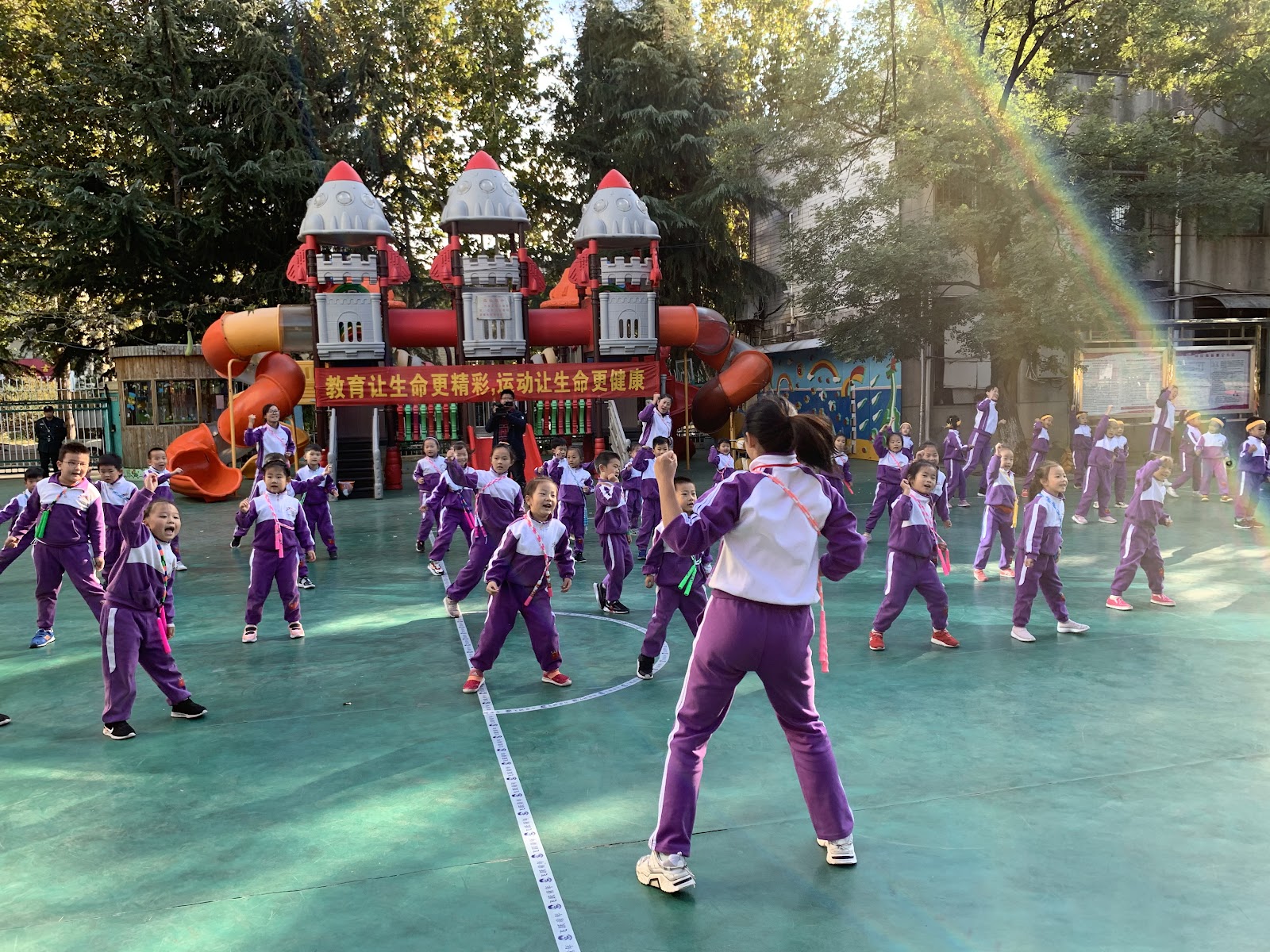 |
| Kindergarteners doing calisthenics during PE class |
 |
| Kindergarteners practicing their basketball skills |
Although the Chinese thoughts about and approaches to education are vastly different than ours, I believe we are so much more similar to each other than we are different. When I asked the Chinese teachers about why they entered the profession, they talked about wanting to make a positive difference in the lives of the students. They spoke about the joy they feel when they see students grow and when students return to visit after they had graduated from their classes. The Chinese teachers told me they love their jobs because they enjoy learning and having fun with colleagues who care as much about kids as they do.
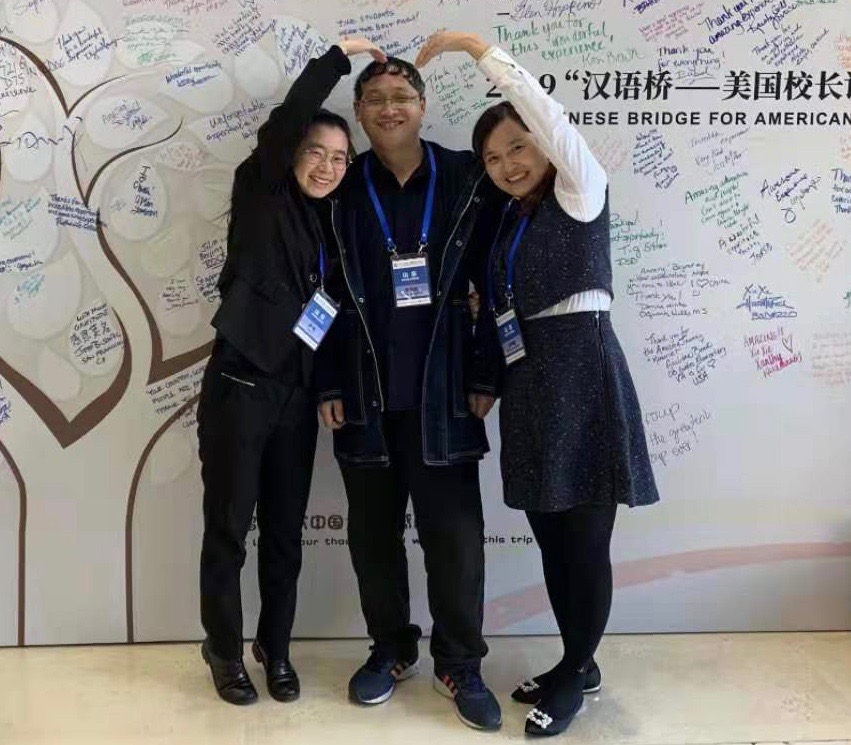 |
| Ms. Li, Mr. Kong, and Ms. Zhang, educators and our hosts in Shandong |
Mickey, my student guide, a senior from Taishan Middle School, told me that despite the pressure he feels from preparing for 高考 (the make-or-break college entrance exam), he takes time to travel with friends and family and play the guitar in his band. He was very excited about the Halloween party that would be taking place at this school in a few days because he and his band will be debuting the original composition he has written. Mickey traveled to Canada last year as part of his school’s exchange program, and he loved his experience. He aspires to be a banker and hopes one day to attend graduate school in Canada.
 |
| My student guide Mickey. He is called Mickey because he had big ears when he was little and he looked like Mickey Mouse |
My main take away from my nine days in China is that Chinese educators and students know a lot about us. Students in schools I visited start learning English and information about American and Western cultures when they are in 3rd grade. Chinese teachers I came across and speak articulately about Western educational thoughts, and they are curious about how US teachers foster creativity and promote authentic learning in our students. Despite the challenges they face teaching fifty students at the same time, they work hard to engage in practices other than traditional “sage on stage” method of teaching. I saw evidence of students engaging in station work, and teachers utilizing practices such as Think-Pair-Share. I would venture to guess that an average Chinese teacher and student knows a lot more about us than we know about them. The US and Chinese relationship is complicated, and whether it is one of friendship or competition (or both), it does not serve us or our students well to be uninformed about the Chinese culture and people. The value of the China Bridge trip is exactly as the name indicates - to build bridges between these two countries and cultures. I am hopeful that I can continue the relationships I have started with the Chinese educators I met as well as with the American educators who value teaching the Chinese language and cultures in their schools. The Chinese educators we visited welcomed us with open arms and are yearning to establish friendships with us. I am hoping this trip is our first step in developing that relationship.
 |
| At the foot of Mt. Tai with my new friend Ms. Zhang, 6th Grade English Teacher in Shandong |
 |
| At the Great Wall with Ms. Zhang |
 |
| With Assistant Principal Kong in the gym of the Affiliated Middle School of Jining Institute Shandong after a rigorous ping pong match. We share the same birthday! |
 |
| With my new friend Principal Bowes, an elementary principal from New Jersey, in the Confucius Research Institute |
 |
At the Great Wall with my new friends Ms. Shen, Assistant Superintendent in the NYC Public Schools, and Ms. Qu, World Language Department Head in Philadelphia Public Schools
|



